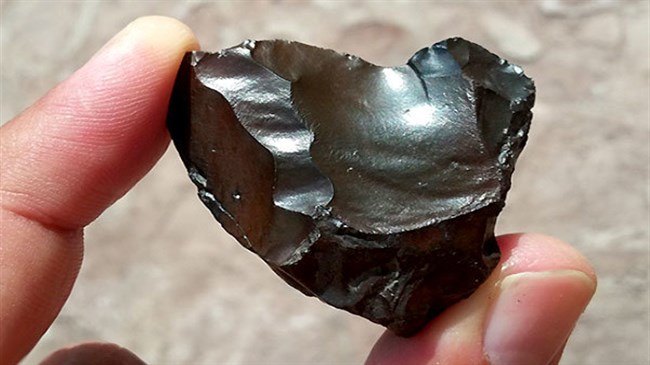
An archeologist involved in the excavations, Morteza Rahmati told Mehr News Agency that during the last glacial period, Qeshm was linked to mainland Iran by a thick layer of ice.
"During investigations in the 'Roof of Qeshm' in June in the vicinity of Tabl and Salkh villages, we found pebble tools finely cut by hand. They included simple cut and variety of main rock. The pebbles used in choppers are flint and igneous rocks and the method of removing flakes which is Oldowan, shows stone tools belonging to mid-Paleolithic era," he elaborated.
"Preliminary examinations supports the hypothesis that the field had been a stone-tool making workshop, since the abundance of pebbles in the site provided the humans the possibility of making stone tools mainly for use in places beyond the immediate borders of the Island," Rahmati said.
"Paleolithic era began 200,000 years ago and ended 40,000 years ago with modern humans coming to the scene. So far, works of this era had been found in Zagros Mountains and in the Iranian plateau, but scant information exists about the settlements of the era in the southern regions of the plateau. Prior to 'Roof of Qeshm', the stone tools had been found in Minab, Jam alluvial plain, Sidich, and Konarak in northern coasts of the Persian Gulf," he added.
"In addition to the choppers, samples also were collected in deposits for further sedimentary examinations. The site houses the oldest human settlement in all Persian Gulf islands which gives the it a unique position. Since the last glacial age, sea levels had been 100 meters below those now, and since water was rather shallow between Laft and Pahal ports, the Island was effectively connected to mainland Iran," Rahmati said.
"Roof of Qeshm is an open field near Qeshm Geo-park. It was explored by Abdolreza Dashtizadeh for the first time in 2005 and was registered on the National Heritage list," the archeologist concluded.

Add new comment